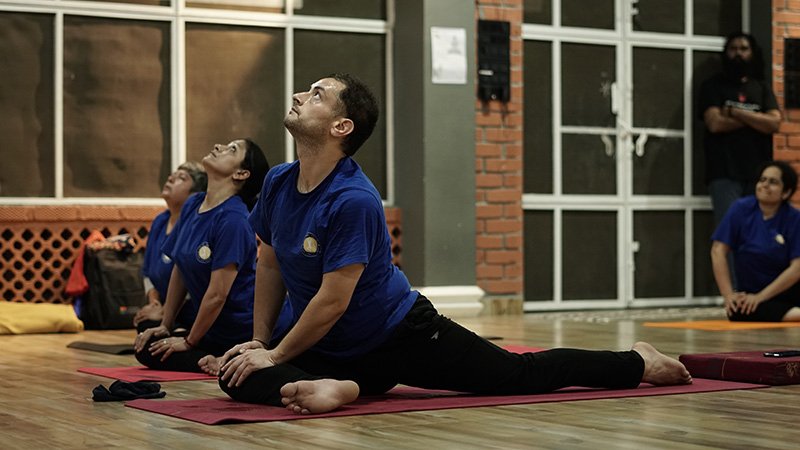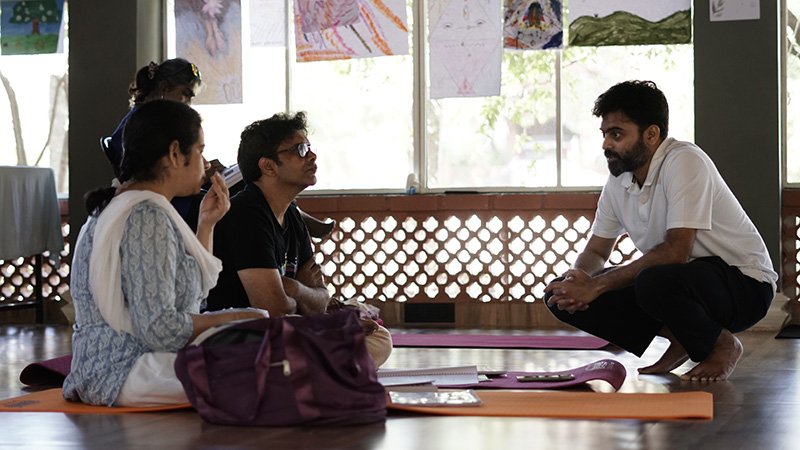
Introduction
The Yogasutras of Patanjali, an ancient and authoritative text on the science of Yoga, outlines the eight limbs or Angas that form the step-by-step approach to achieve the ultimate goal of Yoga – “Chitta Vritti Nirodhah”, the complete cessation of mental fluctuations. The first two limbs, Yama and Niyamas, lay the foundation for this transformative journey.
Akin to other sciences like physics and chemistry where one follows some rules and regulations to perform experiments and get desired results, the Yamas and Niyamas serve as guidelines for undertaking the practice of Yoga.
Samadhi, which is the culmination of the practice of Yoga, cannot be attained unless the practitioner’s mind has been purified and made subtle. The whole practice of Yoga starting from the Yama and Niyamas is designed to bring about this change. Though perfection in Yama Niyamas can only happen when the practitioner touches Samadhi, one should keep practicing them to the best of one’s capacity. First comes the mental preparation and then comes the physical steps.

Yama – Restraints
Ahimsa (Non-Violence)
- Non-violence and non-injury towards all.
- Ahimsa extends beyond physical acts, encompassing mental states such as conflicting thoughts and anger.
- Understanding and studying one’s own nature are crucial for transitioning from violence (himsa) to non-violence (ahimsa).
Satya (Truthfulness):
- Staying true to both physical and mental truths is essential on the path to finding the absolute Truth.
- Practical truthfulness is interconnected with the pursuit of the ultimate Truth.
Asteya (Non-Stealing):
- Non-stealing is not just about physical possessions but extends to coveting others’ belongings.
- Moving towards Asteya involves avoiding desires for what belongs to others.
Brahmacharya (Sensual Restraint):
- Implies maintaining discipline over one’s activities, ensuring sense organs are under control.
- Avoiding activities that do not lead to the realization of the absolute Truth or Brahman.
Aparigraha (Non-Possession):
- Practiced by understanding the impermanence of possessions, including the body.
- Simplifying life and reducing attachments to possessions are crucial aspects of Aparigraha.

Niyamas – Observances
Saucha(Purity and Cleanliness):
- Involves both mental and physical purity, refraining from harboring ill feelings towards others.
Santosha(Contentment):
- Realizing that true happiness is a state of mind, not dependent on accumulating material possessions.
Tapah(Austerity):
- Tapah is the fire of desire to seek Truth, turning all actions towards fulfilling that desire into Tapasya.
Svadhyaya (Self-Study):
- Includes the study of oneself, understanding one’s nature, and examining interactions with the world.
- Encompasses the study of sacred scriptures and texts.
Ishwara Pranidhana (Dedication to the Divine):
- Involves fixing one’s attention on Ishwara (or Purusha), dedicating one’s life to understanding the divine.
The understanding and practice of the Yama Niyamas form the base of all the courses conducted by Bharat Yoga Vidya Kendra (BYVK). Be it online or residential courses, the first and foremost thing that is discussed are these. Through open dialogues between the teacher and students and group discussions amongst the students, an avenue to develop the right understanding is provided.

Conclusion
As we navigate the complexities of modern living, Yama and Niyamas emerge as timeless guides, helping us find balance and clarity in life as it progresses . These principles not only offer a roadmap for personal growth but also serve as beacons of light in creating a more compassionate, mindful, and harmonious world.

